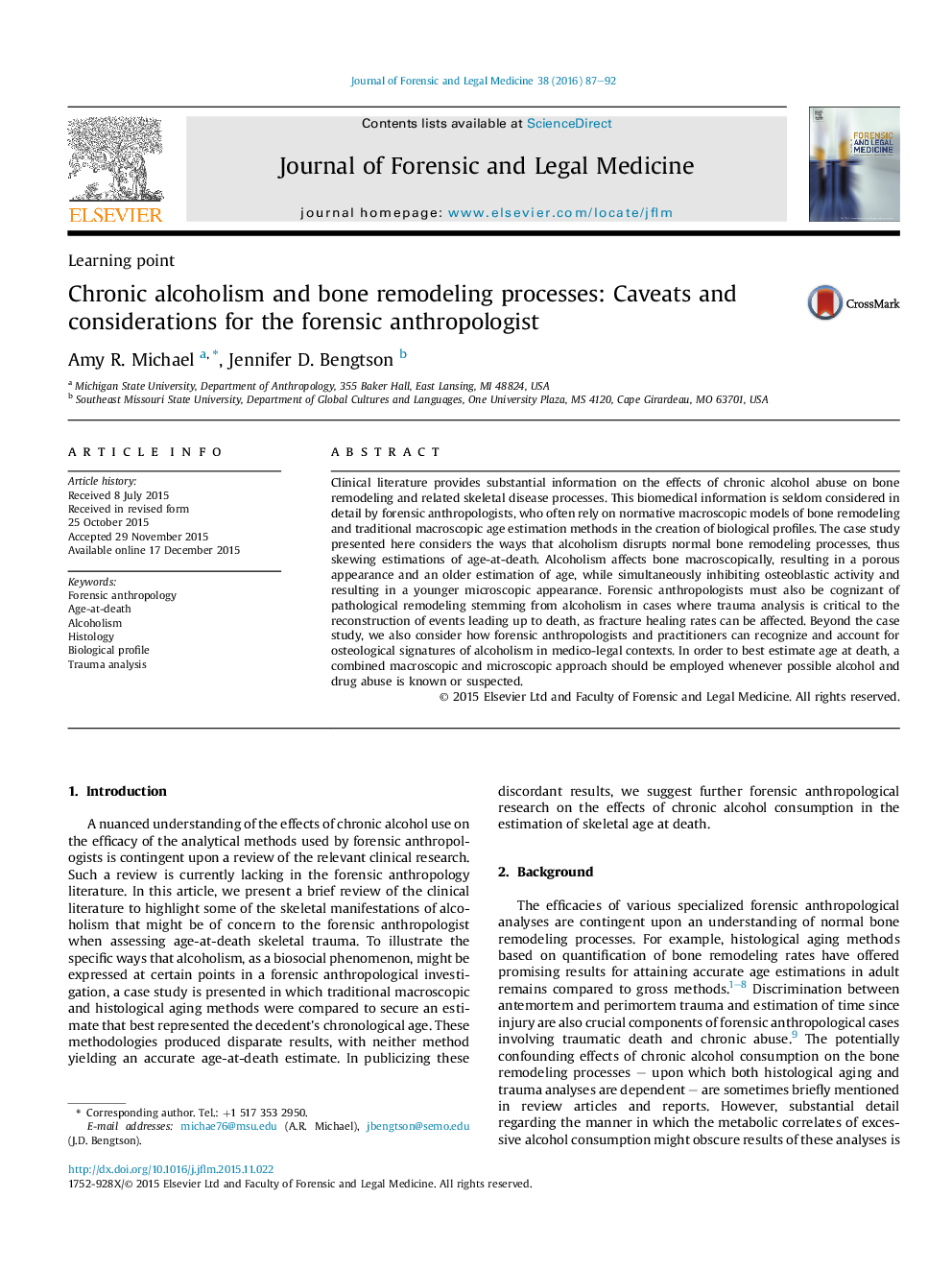| Article ID | Journal | Published Year | Pages | File Type |
|---|---|---|---|---|
| 101736 | Journal of Forensic and Legal Medicine | 2016 | 6 Pages |
•Chronic alcohol consumption affects histological estimations of age at death.•Alcohol abuse appears to result in skeletal under-aging when histological methods are employed.•Forensic anthropologists should be aware of lifestyle factors that affect the outcome of traditional aging methods.
Clinical literature provides substantial information on the effects of chronic alcohol abuse on bone remodeling and related skeletal disease processes. This biomedical information is seldom considered in detail by forensic anthropologists, who often rely on normative macroscopic models of bone remodeling and traditional macroscopic age estimation methods in the creation of biological profiles. The case study presented here considers the ways that alcoholism disrupts normal bone remodeling processes, thus skewing estimations of age-at-death. Alcoholism affects bone macroscopically, resulting in a porous appearance and an older estimation of age, while simultaneously inhibiting osteoblastic activity and resulting in a younger microscopic appearance. Forensic anthropologists must also be cognizant of pathological remodeling stemming from alcoholism in cases where trauma analysis is critical to the reconstruction of events leading up to death, as fracture healing rates can be affected. Beyond the case study, we also consider how forensic anthropologists and practitioners can recognize and account for osteological signatures of alcoholism in medico-legal contexts. In order to best estimate age at death, a combined macroscopic and microscopic approach should be employed whenever possible alcohol and drug abuse is known or suspected.
